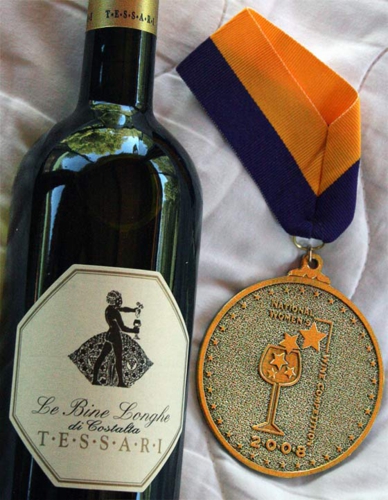Wine shows
First of all, it’s worth remembering that not all wines produced in Australia are entered into wine shows – despite the proliferation of competitions (there are about 60 shows around the country), not all wineries choose to enter. Some winemakers prefer the public to judge their produce, not judges. Plus, wineries must have examples of current-vintage wines ready at the time of judging each year and often they simply can’t meet the deadline. So if a wine doesn’t have a medal, don’t assume it hasn’t performed well in a competition. It may never have been entered!
Secondly, not all wine shows are created equal. A wine with a Top 100 medal from the Sydney International Wine Show has been judged alongside food. A gold medal wine from a major capital city show has been judged with many others in its particular class – a fair sign that it fares well against many of its own kind. On the flip side, the amount of wines entered into some shows has become a point of contention among the industry – a large show can feature thousands of wines to be judged across several days, making the job of the judge profoundly hard when it comes to discerning the subtleties between each wine. Some say the full-flavoured, oak-driven wines dominate over the delicate, individualistic wines.
Each state’s Royal Agricultural Society runs its respective wine show, but there are also smaller, regional shows, like NSW’s Hunter Valley Semillon Show, showcasing wines that are renowned for that particular region. So if a Semillon from the Hunter region features a gold medal, you know that it has been judged against other high-quality Semillons from the area. There are also wine shows for particular varieties, such as the Great Australian Shiraz Challenge, and shows for particular regional conditions, like the International Cool Climate Wine Show.
How are the medals awarded?
Wines are awarded points for three specific attributes:
- Up to 3 points for colour
- Up to 7 points for nose (aroma)
- Up to 10 points for palate (flavour)
Then medals fit into the following categories:
- 18.5-20 points – gold medal
- 17.0-18.4 points – silver medal
- 15.5-16.9 points – bronze medal
Generally, a gold medal signifies a high-quality wine within its class, especially a medal from a large capital city show. A silver medal is obviously a step down from gold – still good quality – but bronze typically signifies it’s of sound quality, something you would expect to purchase when you buy wine online or at any retail outlet.
What is a trophy?
If a wine is a trophy winner, it means that it has won a gold medal in a class of that show and has then been entered into the pool with other gold medal winners to compete for what is known as “best in show”. It is an outstanding wine compared to all the wines in that show – definitely one to look out for!
Show medals certainly play a role in helping the consumer measure quality when buying wine, but a medal is not the only factor to consider. If you’re not sure what a particular medal represents, Google the show or that particular wine – you’re sure to find reviews online.
Like all produce, beauty is in the eye of the beholder, or rather quality is on the taste buds of the drinker. Why not improve your wine-tasting skills so you can taste wine like an expert? Buy award-winning wine online today at GraysOnline.





